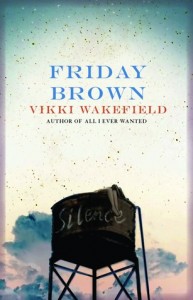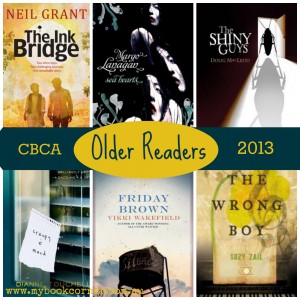Dr Maximew and Dr Vendra smile. They don’t even look that much like cockroaches. They resemble grasshoppers, except they’re red. And everyone knows grasshoppers are friendly, with nice faces and big round eyes. Whoever heard of evil grasshoppers?
To look at Colin, he would appear to be a normal teenage boy. What isn’t normal is that he spends all day in grey pyjamas, shares a room with Len the basket weaver, and is frequently haunted by visions of ‘shiny guys’.
The reasons why the ‘shiny guys’ visit Colin isn’t clearly apparent in the early stages of the story. However, their visits seem to be of concern to his family and the medical staff. For Colin, they are an accepted part of his day.
Through Colin’s eyes, we view how a mental institution runs – with shades of ‘One Flew over the Cuckoo’s Nest’ in some of his descriptions. Like McMurphy, Colin tries to buck the system, sometimes not taking his medication, and often critiquing the methods used in Ward 44:
“Don’t you think it’s in really bad taste to have shell-shocked Vietnam vets weaving things that look like the hats worn by the people who were trying to kill them?” (Colin asks Dr Parkinson in one of his regular sessions.)
Like McMurphy, Colin also plans his escape. He collects supplies, stores them in a secret location and keeps a keen watch on staff movements. He recruits a few friends to join him. Occasionally, the ‘shiny guys’ embolden him, tell him not to take his meds, and help him to see things more clearly (or do they?).
Other characters woven into the story provide a few different perspectives – Mango, who suffers from an attachment disorder, and Anthea, suffering anorexia. Slowly, their stories unfold as they struggle to come closer to ‘normal’ behaviour that society expects of them.
Doug Macleod’s writing is known to be funny and tongue-in-cheek. ‘The Shiny Guys’ meets this expectation, while addressing some serious issues along the way. Macleod even acknowledges himself that much of the story was inspired by real events which occurred in his life: depression and the effects of a stroke, and of course further research into some of their effects. Here is Doug’s own review of ‘the Shiny Guys’ and some interesting insights to how it was written.
As a nominee for the CBCA Older Reader awards, this is another edition which gets my vote. Do you agree?



